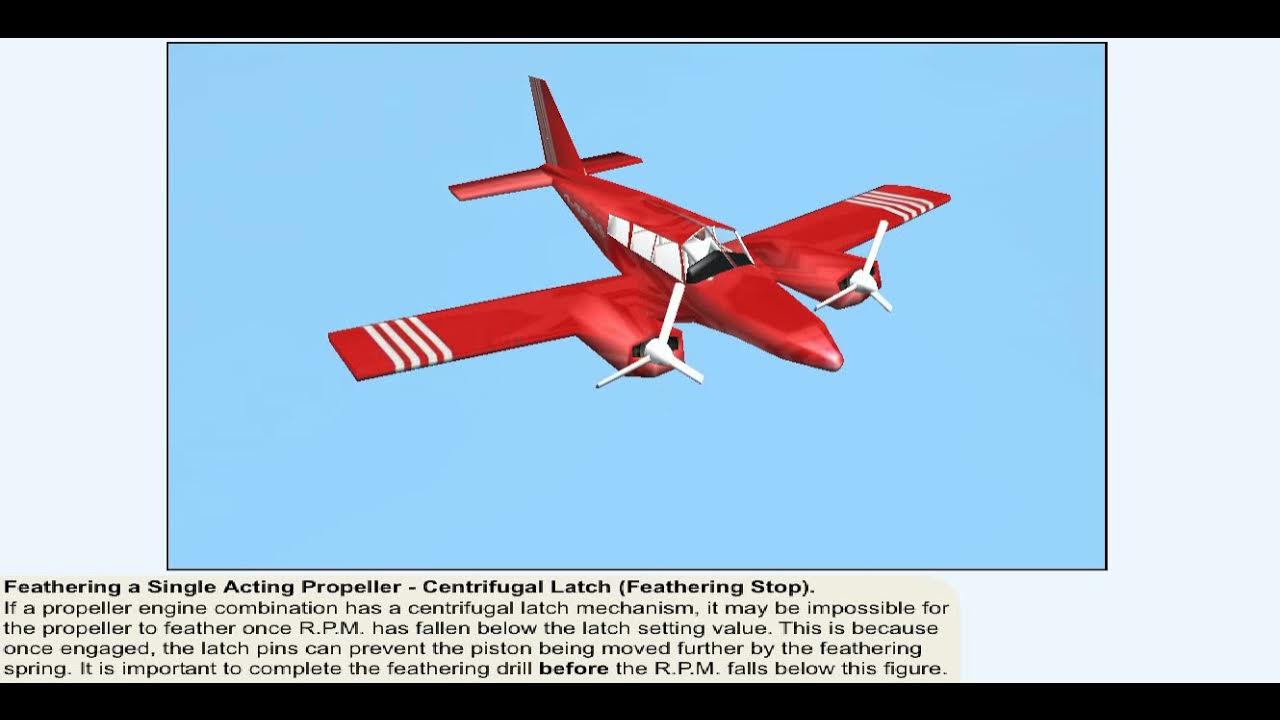Pilatus PC-12 Autopilot Disconnect Pilot Issues
Summary
TLDRThe video script discusses the recurring issue of autopilot disconnection in PC12 aircraft leading to loss of control during Instrument Meteorological Conditions (IMC). It reviews autopilot limitations, the NTSB report on a 2017 accident, and the importance of training for pilots to manage aircraft manually. The script also emphasizes the need for pilots to understand and quickly respond to autopilot disconnection, especially in turbulence, to prevent accidents.
Takeaways
- ✈️ The PC12 aircraft has a history of accidents related to autopilot disconnection and subsequent loss of control in Instrument Meteorological Conditions (IMC).
- 🔄 Autopilot disconnection on the PC12 can occur due to various limitations, including exceeding roll rates, pitch rates, or G-force limits, as well as brief stalls.
- 🚨 The autopilot system on the PC12 will disengage if it detects a stall, even a temporary one caused by turbulence, leading to a series of cockpit warnings.
- 🛠️ Pilots need to be familiar with the autopilot controls and limitations to manage the aircraft effectively, especially during single-pilot operations in IMC.
- 📚 A review of the autopilot's limitations and proper training is crucial for pilots to handle situations where the autopilot disengages.
- 👤 The 2017 NTSB report highlighted the pilot's loss of control due to spatial disorientation after an autopilot disconnection in moderate turbulence.
- 🔑 The PC12 features a big red autopilot disconnect button and a trim switch for managing the autopilot system during flight.
- 📈 The autopilot's pitch and roll rate limits are critical for pilots to understand to avoid disconnection during turbulence or aggressive maneuvers.
- 🛑 In the event of an autopilot disconnection, pilots must silence the cockpit warnings by pressing the autopilot disconnect button to focus on flying the aircraft.
- 🔄 Pilots transitioning to the PC12 should undergo professional training and maintain proficiency through annual training programs.
- 👷 For new or low-time pilots, flying with an experienced mentor in the PC12 is recommended to gain familiarity with the aircraft's automation and systems.
Q & A
What is the primary concern discussed in the video script regarding the PC12 aircraft?
-The primary concern is the autopilot disconnection issue on the PC12 aircraft, which has led to several accidents, especially in Instrument Meteorological Conditions (IMC), causing pilots to lose control of the aircraft.
How many PC12 accidents were mentioned in the 2019 Used Aircraft Guide due to loss of control in IMC conditions?
-There were six different PC12 accidents mentioned in the 2019 Used Aircraft Guide that were the result of loss of control of the aircraft in IMC conditions.
What is the significance of the autopilot disconnection in the PC12 aircraft?
-The autopilot disconnection in the PC12 can be particularly challenging for single pilot operations in IMC conditions, as it may leave the pilot with a daunting task of hand flying the aircraft, especially if they are not comfortable or qualified to do so.
What are some of the limitations of the PC12 autopilot as discussed in the NTSB report from a 2017 accident?
-The limitations include the autopilot disconnecting during spatial disorientation, moderate turbulence, and night IMC conditions, which can lead to the pilot losing control of the aircraft.
How does the autopilot engage and disengage on the PC12 aircraft?
-The autopilot on the PC12 is engaged by pushing the autopilot button on the flight guidance control panel, and it can be disengaged by pressing the same button or the big red autopilot disconnect button located on the left side of the yoke.
What is the purpose of the trim trigger on the control wheel of the PC12?
-The trim trigger on the control wheel allows the pilot to temporarily disconnect the autopilot and manually retrim the aircraft without completely disconnecting the autopilot, which is useful for adjusting the aircraft's trim during flight.
What are the autopilot monitor limits that can cause the autopilot to disconnect on the PC12?
-The autopilot will disconnect if the roll rate is greater than 10° per second, pitch rates are more than 5 degrees per second, or if accelerations exceed a plus 1.6g or fall below a negative 0.3g envelope.
How does the PC12 handle stall conditions in relation to the autopilot?
-If the aircraft enters a stall condition, even if temporarily due to turbulence, the autopilot will disconnect. This can happen if the angle of attack exceeds the critical angle as indicated by two independent angle of attack sensors located on each wing.
What actions should a pilot take immediately after an autopilot disconnect in the PC12?
-The pilot should first focus on flying the aircraft and disregard the warnings momentarily, then turn off the autopilot warnings by pressing the red autopilot disconnect button on the yoke, and once the aircraft is under control, attempt to re-engage the autopilot within its operational limits.
Why is ongoing professional training important for pilots transitioning to the PC12?
-Ongoing professional training is crucial to maintain proficiency in handling the complex automation and systems of the PC12, especially for pilots who are new to the aircraft or transitioning from smaller aircraft.
What is the recommendation for new PC12 pilots regarding training and mentorship?
-New PC12 pilots are recommended to attend formal training programs like those offered by Simcom or Flight Safety and, if they are relatively low-time pilots, to fly with a mentor pilot for 150 to 200 hours to gain experience in various conditions.
Outlines

このセクションは有料ユーザー限定です。 アクセスするには、アップグレードをお願いします。
今すぐアップグレードMindmap

このセクションは有料ユーザー限定です。 アクセスするには、アップグレードをお願いします。
今すぐアップグレードKeywords

このセクションは有料ユーザー限定です。 アクセスするには、アップグレードをお願いします。
今すぐアップグレードHighlights

このセクションは有料ユーザー限定です。 アクセスするには、アップグレードをお願いします。
今すぐアップグレードTranscripts

このセクションは有料ユーザー限定です。 アクセスするには、アップグレードをお願いします。
今すぐアップグレード5.0 / 5 (0 votes)






